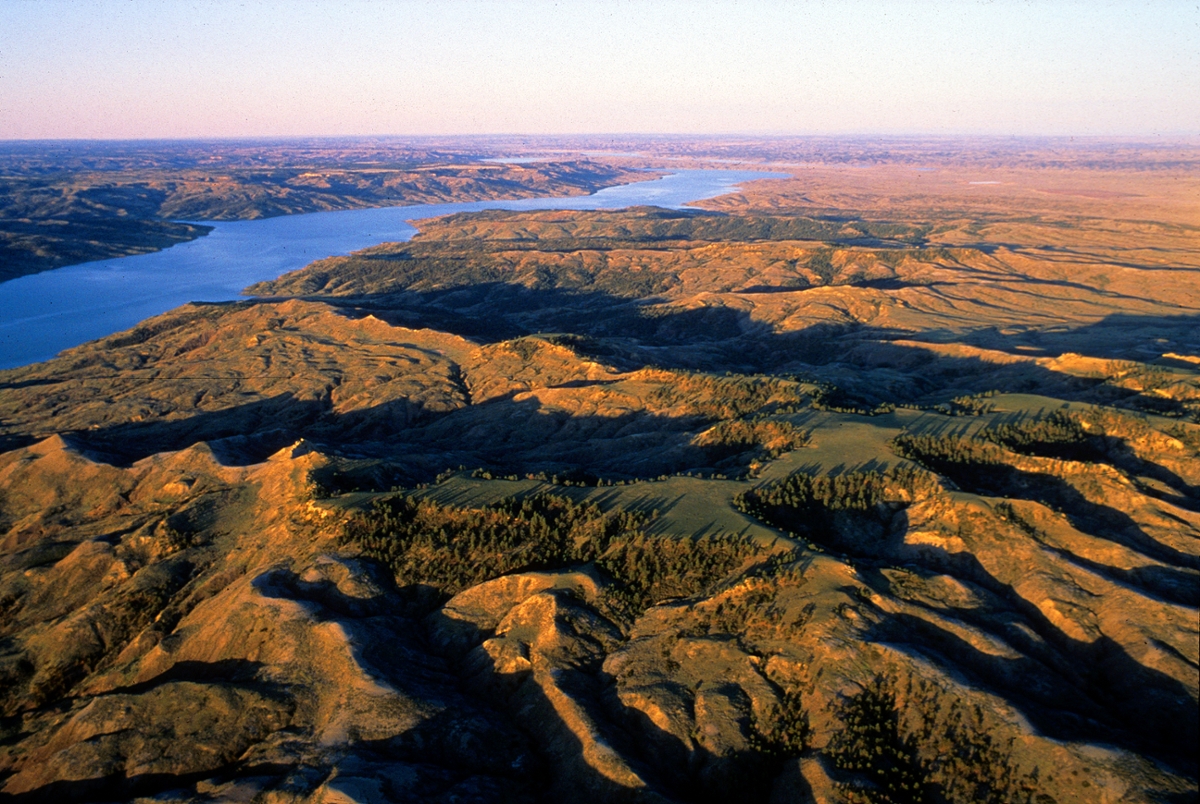The Promise of the Equinox: A Personal Account
 Spring sun reveals the Charles M. Russell National Wildlife Refuge. (Photo by Rick Graetz)
Spring sun reveals the Charles M. Russell National Wildlife Refuge. (Photo by Rick Graetz)
On about Dec. 21, the occasion of the winter solstice, the sun takes a brief respite on the tropic of Capricorn at 23 1/2 degrees south latitude. Then it begins its six-month odyssey north for a rendezvous with the tropic of Cancer at 23 1/2 degrees north latitude. Along the way, at a precise second in March, its rays are directly overhead on the equator, declaring the Spring Equinox. This year that instant occurs at 10:57 a.m. Montana time on Thursday, March 20.
In Montana, though, it is only a promise of something to come. March’s third week usually finds us deep in winter with nary a sign of spring, although that is questionable in this year of 2014. The pledge is that it will happen, but the question is “when?”
I have had the occasion to observe the arrival of this guarantee in various forms, but one moment in time shines:
Early May quite a few years ago, I was in the Missouri River Breaks near Jordan photographing the Charles M. Russell National Wildlife Refuge. Daylight in May arrives in the early hours, especially near the Dakota line and the Central Time Zone. I opened the door of my habitat before first light to check on the weather. Snow spitting from low clouds on a north-northeast wind indicated an up-slope condition. My first inclination was to stay in bed a bit longer and see what would happen, but something tugged at me to head out.
I pointed my iron chariot north toward the Missouri. After traveling about 20 or so miles out into the breaks, following a primitive road on the verge of becoming gumbo, I reached the roads terminus. The north wind was still blowing, the clouds were low and winter was still attempting to hold its ground by shaking out flakes of white like she was emptying her bag.
Fossils of ancient critters have been, and still are, found in this broken landscape of simple grandeur. I decided to descend into the canyon in front of me, not in hopes of finding dinosaur remains, but rather to get out of the wind and explore the deep coulee.
As I neared the bottom, the clouds were lifting. After poking around a while, I observed patches of blue sky above, and the snow had stopped. I then climbed the 300 or so vertical feet out of the ravine and topped the ridge. The wind had quit, and a sense of equilibrium surrounded me.
As I started heading out on one of the long ridges, the wind picked up again, but this time it was from the southwest – the sky was clearing as the clouds were rapidly disappearing. The wind maintained a steady but warm pace. I continued my trek northward to eat a late lunch on one of the points that overlook the labyrinth of breaks and the Missouri River beyond. By now the temperature was very comfortable. As I was perched on my chosen spot, I noted small flowers literally opening around me. I realized that at that instant, the prairie was turning its face toward spring and wouldn’t be denied. There was no turning back the balmy wind; winter had made a calm surrender. The promise of Equinox was being delivered before my eyes.
My hike back to the vehicle was in the face of a gentle southwest breeze. Spring is a great time on the prairie, and life was good that day!
It is not that winter wouldn’t try a brief weak puff now and then, as spring would allow it that freedom, but it never would grip the climate again until its autumn instant when winds from the north would signify that it was time once again.
Happy Equinox!
Rick Graetz | University of Montana | Department of Geography
